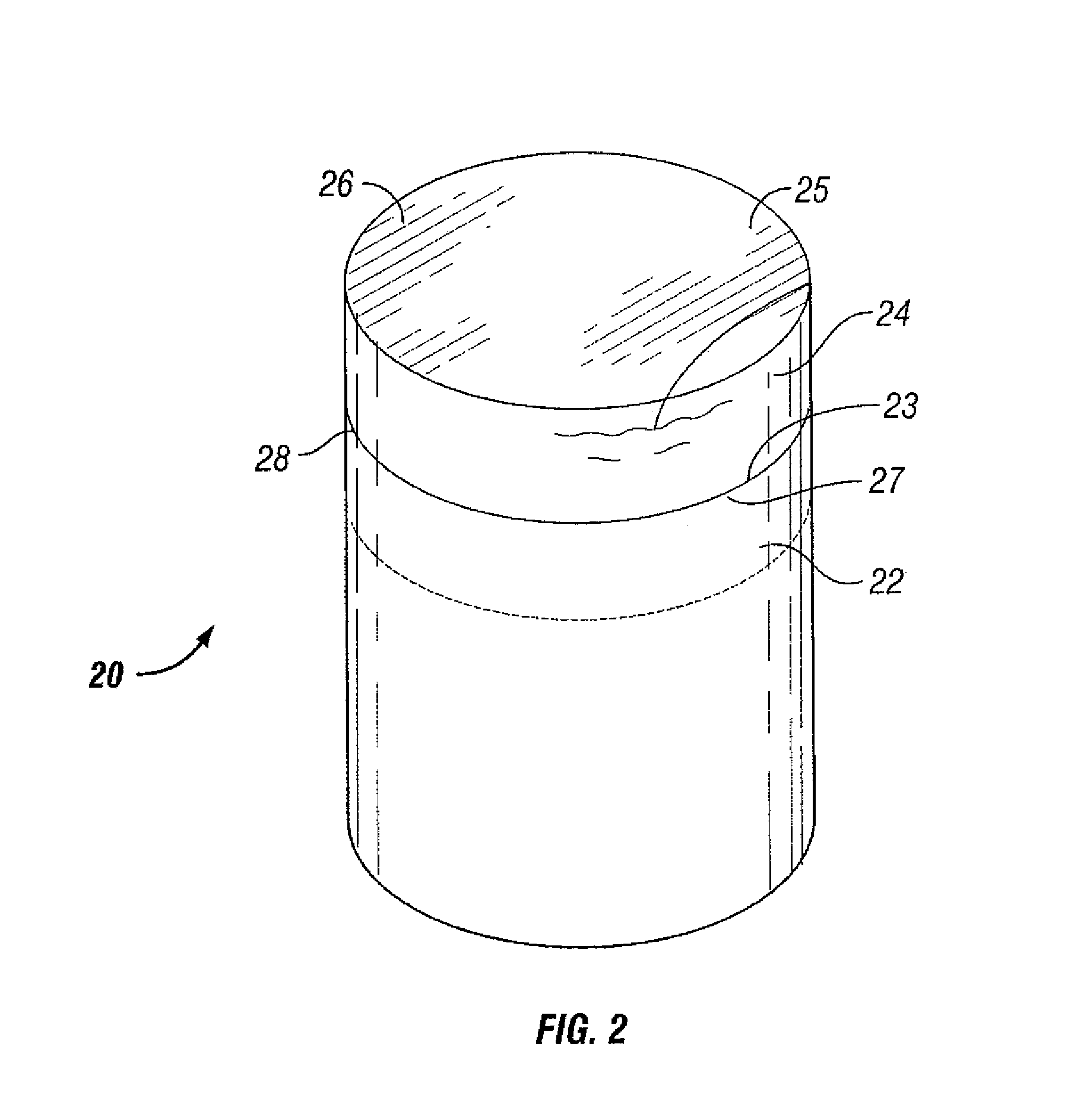Thermally stable diamond brazing
a diamond brazing and thermal stability technology, applied in the field of drill bits, can solve the problems of affecting the life of the drill bit, structural failure of the pdc cutting layer, and the inability to sustain a sufficiently low wear rate of the drill bit using the conventional pdc cutter
- Summary
- Abstract
- Description
- Claims
- Application Information
AI Technical Summary
Benefits of technology
Problems solved by technology
Method used
Image
Examples
Embodiment Construction
[0029]In one aspect, embodiments of the invention relate to a cutting element having a diamond layer brazed to a substrate. In particular, embodiments relate to a cutting element having a braze joint with a high shear strength. Moreover, embodiments relate to a method for forming such cutting elements.
[0030]Referring to FIG. 3, a cutter assembly is shown used to make a cutting element according to one embodiment of the present invention. The cutter assembly 30 includes a co-axial stack of a TSP diamond layer 32, braze layers 34, a metal interlayer 36, and a substrate 38. Upon treatment of the cutter assembly 30, a cutting element may be formed when the braze layers 34 are melted and join together the TSP diamond layer 32, the metal interlayer 36, and the substrate 38, forming a braze joint (not shown separately). It may become apparent to anyone skilled in the art that these metal interlayers 36 become effective shock absorbing materials that can be applied to all cutting elements, ...
PUM
| Property | Measurement | Unit |
|---|---|---|
| shear strength | aaaaa | aaaaa |
| thickness | aaaaa | aaaaa |
| shear strength | aaaaa | aaaaa |
Abstract
Description
Claims
Application Information
 Login to View More
Login to View More - R&D
- Intellectual Property
- Life Sciences
- Materials
- Tech Scout
- Unparalleled Data Quality
- Higher Quality Content
- 60% Fewer Hallucinations
Browse by: Latest US Patents, China's latest patents, Technical Efficacy Thesaurus, Application Domain, Technology Topic, Popular Technical Reports.
© 2025 PatSnap. All rights reserved.Legal|Privacy policy|Modern Slavery Act Transparency Statement|Sitemap|About US| Contact US: help@patsnap.com



